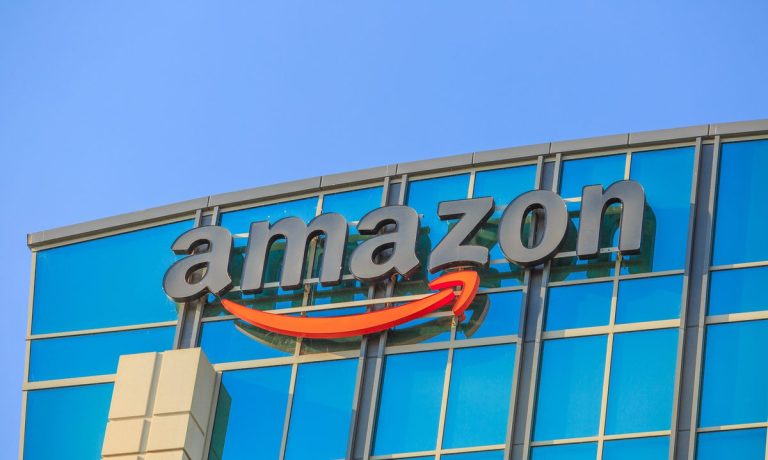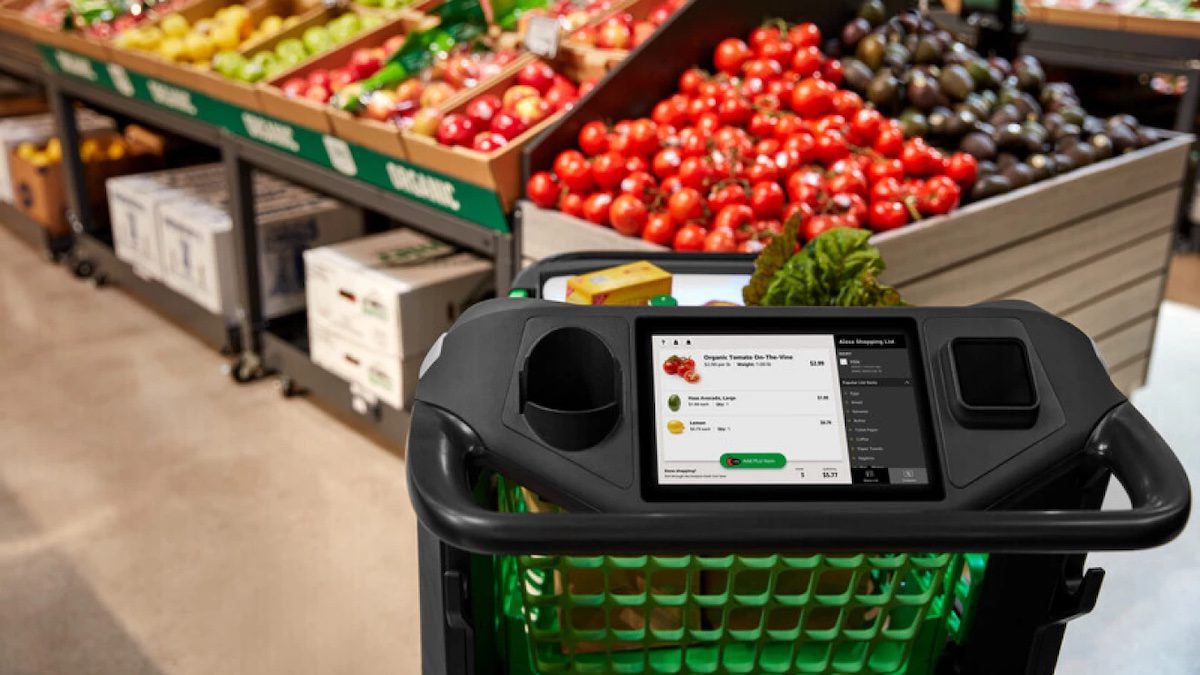Amazon Eyes Cheaper, Smaller Version of ‘Just Walk Out’ Tech

What started as a three-man foray in 2012 to rethink the physical retail experience and eliminate standing in line has blossomed into a massive global operation today that’s at the center of Amazon’s omnichannel shopping experience.
Anchored by its trio of branded contactless retail payment solutions — Just Walk Out shopping, Amazon One palm scanning tech, and Amazon Dash Carts — the eCommerce giant’s commitment to reinvent the in-store experience is still very much in the experimental phase yet stands at the center of its plans to expand its own footprint of physical locations.
“As my team continues to build and scale new technology services, the hardest part is ensuring that the technology recedes into the background, so when customers come in to shop, it’s a seamless and magical experience,” said Amazon Vice President of Physical Retail and Technology Dilip Kumar in a blog post summarizing the multi-pronged project’s progress and ambitions.
Making the Magic Happen
While Kumar said his team continues to refine and scale that magical experience in order to bring it to more real-life stores in a range of different formats and geographies, he told an attendee at the company’s “re:Mars” event (which stands for machine learning, automation, robotics and space) that convenience, security and fun are at the core of everything the team doing — as well as a lot of very heavy, high-end computing technology.
“We’ve made ongoing inventions at all layers, including sensors, optics and machine vision algorithms, [and] as a result, we’ve reduced the number of cameras required in Just Walk Out technology-enabled stores to make them more cost-effective, smaller and capable of running deep networks locally,” Kumar said.
 As it stands, the “diversity of retail environments” where Amazon’s artificial intelligence (AI)-powered suite of touchless tech has been deployed has grown, not only in its own mix of Amazon Fresh grocery and Amazon Go convenience stores, but also by being installed by a growing list of third-party users — each of which carry a unique set of challenges and problems to solve for.
As it stands, the “diversity of retail environments” where Amazon’s artificial intelligence (AI)-powered suite of touchless tech has been deployed has grown, not only in its own mix of Amazon Fresh grocery and Amazon Go convenience stores, but also by being installed by a growing list of third-party users — each of which carry a unique set of challenges and problems to solve for.
Surges, Sandwiches or Strawberries
For example, stadiums, such as Boston’s TD Garden, that have brought touchless retail tech onboard, present a unique surge demand problem since the bulk of buying happens all at once in a short intermission.
Read more: Amazon’s ‘Just Walk Out’ Tech Comes to Stadiums
Other obstacles in the way have included different or mixed sources of lighting — which makes video monitoring more difficult — as well as more basic variations between locations, such as store size, capacity, SKU counts and vastly different types of merchandise.
“Over the past few years, we’ve increased the complexity of use cases where Just Walk Out technology is deployed — from 1,800-square-foot Amazon Go stores to 40,000-square-foot, full-size grocery stores — and had to account for differences in shopping behavior,” Kumar said in the blog post.
Specifically, bridging the habit-gap between grocery shoppers that rummage for produce is vastly more complicated than solving for a grab-and-go salad or sandwich offering, he said, pointing to the fusion of vision and sensing technologies in the Amazon Dash Cart, which can detect items in motion while also capturing accurate weights and quantities.
See more: Amazon Introduces Smart Shopping Carts at LA Supermarket
No matter what the venue or product, Kumar repeatedly stressed the need for seamless security and speed, citing the “strict latency budgets” they must meet to make sure real-time receipts are just that.
Don’t Forget Fun
Even the retailer’s newest physical store iteration has presented a unique set of challenges, he said, while speaking of the recent launch of Amazon Style, the company’s tech-enabled apparel store that merges personal self-scanning with AI-driven suggestions based on a user’s profile and history that can direct items to a digital shopping cart or even have them delivered for try-on in a specially equipped connected fitting room.
Read more: Amazon Opens 1st Brick-and-Mortar Clothing Store in LA
As much as he said Amazon Style was designed to offer customers a personalized, convenient shopping experience that helps them effortlessly find styles and bargains that match their tastes, the challenge there was to strike a balance between helpful and intrusive while still allowing shoppers to get the experience of discovering something special on their own.
“We went to great lengths [at Amazon Style] to keep the fun in shopping while elevating the experience through machine learning algorithms,” Kumar said in the post.